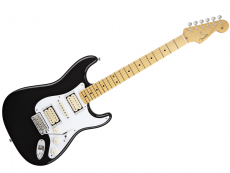
Previously we looked at the structure and design of the guitar, as well as how different notes are played on the instrument, and how it has been used across various different genres throughout time. Now we’re going to have a closer look at the capabilities of this instrument and how you would go about playing it.
While the guitar does not have the technical abilities of the piano, in that it cannot play the entire range of notes, and it is harder to play many notes at once, this instrument has a unique playability to it, in that it feels very comfortable to just improvise and mess around with it. This is why many modern artists will use it as an alternative instrument with which to write music. The easiest way to play the guitar is using chords. Chords are the fundamental harmonic element of most music. When writing popular music, it is often easiest to start with a nice sounding chord progression. Chords are made up of 3 or more notes played at the same time, and these can be played fairly easily on the guitar by arranging your hand to hold down several notes at once. After you’ve learnt the hand shape for a C major chord, it can easily be recalled later, so that when writing music you can just try putting a variety of these chords together. One reason that C is a popular key for writing music in is that the chords of C are quite easy to play on both piano and guitar. However, one advantage of the guitar in songwriting is that, with the use of a Capo, a small metal clip placed along the neck of the guitar at a certain fret, the chords you are playing will be ‘transposed’ into a new key. This means that though you are still using the relatively simple C Major hand shapes, the chords that will be played will actually be in a different key, such as F Major. This means that you can play in any key you like, whilst only having to learn the hand positions for one key, a practicality that the piano cannot boast. If you have a guitar, then capos are a fairly cheap accessory, which will make your life a lot easier.
Of course, some guitarists prefer not to play chords, but play individual notes instead. This is generally thought of as a little harder, because it requires the hands and fingers to be moved much more quickly into different positions. Classical or flamenco guitarists prefer this style, as well as rock soloists, who often compete for how quick and complex a string of notes they can play. In a rock band, you may often have two guitarists, where one plays chords and the other plays a more intricate melodic part. Of course, using chords does not necessarily mean that every note has to be strummed at once, since guitarists will often play arpeggios (repeated patterns using the notes of a particular chord) to give the chord an interesting rhythm while still remaining fairly simple.
Hopefully in these articles, I’ve given you a basic idea of how guitars work, how they are used by instrumentalists in different ways, and how they have been a vital element in many styles of music throughout time. If you want to pick up the instrument yourself, I suggest that you take a look at some of the many resources on the internet. I myself am a self-taught guitar player, and I believe that with just the resources that are freely available and some determination, it should be possible for anyone to learn guitar at home. The bass guitar, which is very similar to the guitar in terms of its design and the way it works, has a different sound to it and a different use in music as a whole, so I’ve decided to dedicate a whole article to this separately in the future, so if you’ve enjoyed this article, keep a look out for that one coming soon.
Image from: http://files.umwblogs.org/blogs.dir/5243/files/2011/02/fender-dave-murray-stratocaster.jpg

0 Comment:
Be the first one to comment on this article.